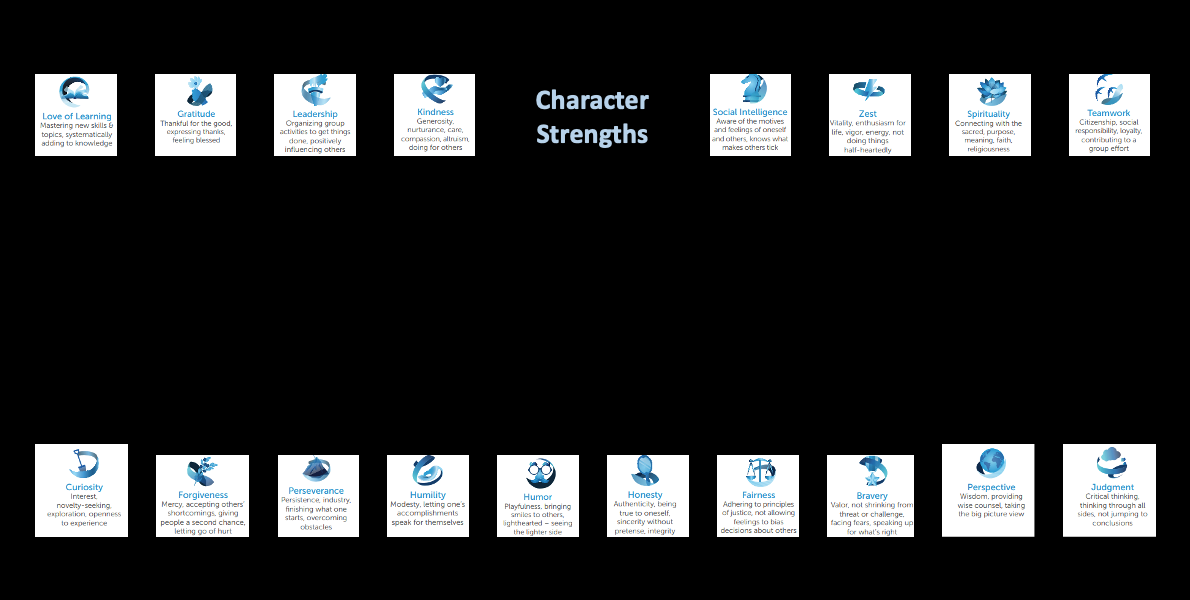The Consulting Pyramid Part 2
|
The great Chinese philosopher and author of the Tao Te Ching, Lao Tzu, once said, “The journey of a thousand miles begins with one step.” Like the one step at the beginning of the journey, the college application process can be framed as a step-by-step endeavour that begins with careful planning and organization. Each stage, from choosing schools to writing essays, is a piece of the larger puzzle. It’s important to recognize that, much like embarking on a long journey, the key to success lies not in trying to rush ahead but in taking deliberate and thoughtful steps toward your goals. The final tier of the consulting pyramid is the application process itself, which ideally begins in January of junior year. While this may seem premature, allotting 9-10 months for preparation will help you do your best work and minimize stress, especially since students will likely need to complete dozens of school-specific supplemental essays in addition to the rest of their application requirements. In this article, we’ll explore the key factors admissions officers consider when evaluating applicants, including curriculum rigor, GPA, SAT/ACT scores, AP/IB exams, extracurricular activities, personal statement, supplemental essays, letters of recommendation, interviews, and demonstrated interest. Also, check out Part 1 of this series if you haven’t already, where we cover the two foundational layers underpinning the application process—skill-building and developing your genius zone. Personal Statement We recommend starting with your personal statement, as it takes time to fully develop your ideas and may require several drafts before you feel satisfied. An effective way to begin brainstorming your personal statement topic is by asking yourself, “What are the character strengths or core values I want to highlight in my application?” Hint: if you’ve already developed your genius zone, you should have several obvious traits or experiences to draw from. The goal is for your essay to illustrate your growth by showing both your actions and the insights you gained from them. Once you’ve narrowed down your potential topics, free-write at least two paragraphs for each. As you do, consider which of your character strengths or core values may not come across as strongly in other parts of your application, and focus on those. Remember, while you want your personal statement to make an impact, the best essays are often inspired by seemingly ordinary experiences, like shopping at Costco or making a cheesecake. For even more detailed help, consider joining our next session of Write Your Way Into College. Developing a College List, Timing Your Application, and Demonstrating Interest Two other important steps to complete early are developing a comprehensive list of colleges to which you plan to apply and organizing your application materials (e.g., your resume and letters of recommendation) to strategize your application timeline—especially if you’re considering applying Early Decision (ED) to a top-choice college. Applying ED means submitting your application early in the fall of 12th grade—usually by November—and receiving an admissions decision later that same fall, typically in mid-December. Students may apply ED to only one college because it requires signing a binding contract obligating you to attend if admitted. ED is an excellent way to demonstrate your interest and can increase your chances of admission since colleges know you are committed. In fact, many selective universities now admit a significant portion of their class through this process. While applying ED is the ultimate way to show your enthusiasm, there are other effective ways to demonstrate interest, such as attending college fairs, visiting campus, writing a compelling “Why Us” essay, interviewing, exploring a college’s website, opening their emails, and engaging with them on social media. By completing some or all of these steps, students can successfully demonstrate—or “prove”—their interest in attending a college, improving their chances of acceptance. Although demonstrated interest can strengthen an application, the first step is building a balanced college list. Before deciding whether to apply ED, students should start by identifying 15-20 schools that align with their academic profile and preferences, using free tools like the College Admissions Index (CAI) to assess their chances. As part of this process, it’s important to determine which colleges are a good “match”—schools that best fit your academic, social, and financial needs. Key factors to consider include location, size, programs of study, social life, political culture, internship opportunities, graduate school/job placement, and cost. After identifying colleges that are a good match based on your preferences, the next step is to assess “fit”—how colleges will perceive your application. Based on projections of your future CAI, you can estimate your probability of admission to schools with varying degrees of selectivity. The probability of admission falls into four categories: “Dream” (25% or less), “Reach” (26-50%), “Target” (51-75%), and “Likely” (76% or above). When building your initial list, aim for a balanced mix of schools that match your preferences and schools with varying degrees of fit to ensure a well-rounded selection. Supplemental Essays In addition to the 650-word personal statement, most selective colleges require students to write one or more supplemental essays. The most common prompts ask students to explain their intellectual interests and/or why they want to attend the particular college. Once you’ve narrowed down your college list, it’s a good idea to gather and organize all the required essays for the schools you’re applying to. Then, create a strategic roadmap, considering how seemingly different essays overlap. Many colleges also ask unique questions, so as you work through your list, you can add additional essays to the appropriate groupings. For example, one of UChicago’s 2024-25 prompts—known for its quirky questions—was: ‘We’re all familiar with green-eyed envy or feeling blue, but what about being “caught purple-handed”? Or “tickled orange”? Give an old color-infused expression a new hue and tell us what it represents.’ By organizing your essay materials early, you’ll be well-prepared to tackle wacky questions like this. Maintaining Your Grade Point Average (GPA) One of the first application materials that admissions officers generally review is a student’s transcript, which includes your GPA. Your GPA reflects your unweighted grades in core courses and academic electives, measured on a standard 4-point scale. Colleges use this to compare your academic performance with that of students from other high schools and to gauge your potential for success in college. With an appropriately challenging high school curriculum (which we’ll discuss in the next section), you should expect to spend an average of 3-4 hours per day, including weekends, on studying and completing homework. To make the most of this time, it’s important to manage procrastination and avoid multitasking. We tend to procrastinate not out of laziness, but because we’re dodging some pretty unpleasant emotions. However, reframing our attitude toward procrastination can be a game-changer. Similarly, while we may rarely think about multitasking, it’s a major obstacle to productivity. Simply putting your phone on “Do Not Disturb” can minimize distractions from notifications, calls, and texts, helping you stay focused on your study materials without the ongoing temptation to check your messages. As you progress through high school, developing the ability to do deep, focused work will be a major advantage in staying organized and keeping up with your coursework. Here are some common mistakes students frequently make:
Building Your Curriculum with Intention Admissions officers also use your transcript to assess the rigor of your curriculum—the number and level of high school courses you’ve taken in the five core subject areas (math, science, English, social studies, and foreign language) as well as academic electives. Selective colleges evaluate this rigor in the context of all applicants and your high school peers. However, as we discussed in Part 1 of this series, your curriculum should ultimately be guided by your own goals, performance, developing interests, and strategic choices. Ideally, you should develop a curriculum plan for all four years of high school and reevaluate it each year. While there are exceptions, selective colleges generally prefer students to take courses in the five core subject areas throughout all four years in high school. They also want to see evidence that you can thrive academically at the college level. One of the best predictors of college success is taking rigorous, college-level courses—and performing well in them. Here are some common pitfalls to avoid when planning or adjusting your course schedule:
Standardized Testing - SAT/ACT While almost all colleges are currently “test optional,” most selective institutions still place significant value on the SAT and ACT as a way to compare applicants. Additionally, schools may use these scores to award students merit scholarships. Check out our article, “Maximizing Your Child’s Potential: A Parent’s Guide to SAT/ACT Preparation,” to learn more about deciding which test is right for you and when to begin studying. Advanced Placement (AP) and International Baccalaureate (IB) Exams AP and IB exams correspond to specific courses in core subject areas and electives. They have replaced SAT Subject Tests as a way for admissions officers to assess course rigor and your mastery of the content. A key question to consider when deciding whether to submit these scores is whether your performance on an AP or IB exam supports your genius zone. Two common mistakes to avoid when prepping for AP and IB exams are spending too much time self-studying beyond the high school curriculum and failing to recognize the gaps between material covered in class and what is presented on the exam. Extracurricular Resume Applicants to selective colleges must complete an extracurricular resume or “activity sheet,” which may include co-curricular participation and recognition, athletics, volunteer or paid work experience, community service, family responsibilities, and hobbies. When reviewing a resume, admissions officers value commitment over time, the development of leadership and other skills (rather than titles), and achievement. Ultimately, they look for significant depth and impact in the activities you choose to pursue. You should strategically prioritize your interests and activities for the upcoming school years and summers. Being strategic doesn’t mean simply trying to “look good for colleges”; it’s about taking advantage of opportunities to explore and develop your passions. A key ingredient for success is recognizing that your extracurricular activities are not only about “doing,” but also about deep self-reflection and making connections across your various endeavours. Here are some common mistakes to avoid:
Letters of Recommendation (LORs) LORs are important to colleges because they help admissions officers assess your potential for academic success and reveal the authenticity of the story told in other parts of your application. Most selective colleges require three LORs: two from teachers and one from your school counselor. When choosing which teachers to ask for recommendations, select those who know you well and, if possible, can speak to your character beyond the classroom. It’s best to avoid asking 9th and 10th grade teachers, as they may focus on less-recent aspects of your growth and interests. To give your recommenders ample time to write thoughtful letters, aim to request LORs before the summer of your senior year. Admission Interviews Finally, while most selective colleges consider an admission interview “optional,” they value the opportunity to learn more about an applicant. Colleges seek students who demonstrate positive character traits and a genuine interest in attending their school. Interviews can be conducted either “on campus” with an admissions representative or “off campus” with an alumni. However, it’s important to remember that the interviewer’s report can either reinforce or contradict the rest of your application. To prepare, familiarize yourself with common interview questions, develop your talking points, and practice speaking confidently. Always research the college thoroughly and come prepared with thoughtful questions that go beyond what can be found on their website. The best interviews feel more like a conversation than a formal Q&A. However, be prepared for common questions that may ask you to talk about your family, community, academic background, extracurricular activities, future aspirations. You can also expect questions about your favorite books, movies, TV shows, heroes, what the specific college offers you, and how you plan to contribute to the campus community. Conclusion By focusing on skill-building and developing their genius zone (as covered in Part 1), students position themselves to minimize stress during the application process and stand out as compelling applicants. While the process may feel overwhelming at times, we are here to support students through each step, helping them feel organized and confident in their decisions. By getting a jump-start on their essays and managing their materials efficiently, students can stay on top of deadlines and present a polished application that highlights their unique character strengths. Our team is ready to support you as you embark on your application journey. Request a consultation today! |
If you’re ready to dive deeper into your college application, check out the guide that our college admissions experts put together to help you navigate all the criteria admissions committees look at.



